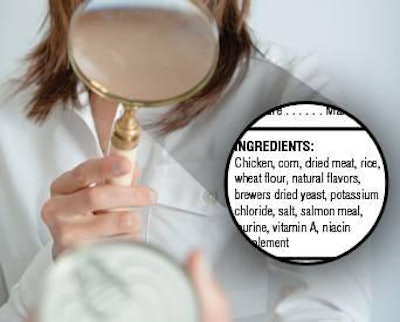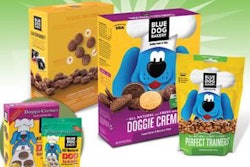
Petfood product names and ingredients can be key factors in a consumer’s decision to buy a particular product. For example, some pet owners may try to avoid gluten or certain protein sources in a petfood to help prevent allergic reactions in their pets; those who remember the melamine-related recalls of 2007 may still scan ingredient labels for the presence of wheat or wheat gluten.
For manufacturers who export petfood, accurate identification of animal protein sources is essential, as many countries will not accept foods containing ruminant material (beef/sheep) in the aftermath of the bovine spongiform encephalitis (BSE) outbreak. For these reasons, the Food and Drug Administration’s Federal Food Drug and Cosmetics Act (FFDCA) requires that petfoods, like foods for humans, be truthfully labeled.
While the recent amendment to the FFDCA, the Food Safety Modernization Act (FSMA), is concerned primarily with health issues that may result from adulteration of foods, the requirements for truthful labeling still apply. And though many elements of the FSMA are still pending, under this law importers and producers will bear more responsibility for verifying the safety and authenticity of the proteins and grain products that they import or purchase.
The need for increased attention to identifying animal proteins and grains was highlighted in a recent survey of 21 commercial dog foods performed by our laboratory in Florida. Ten of the foods were purchased in local grocery stores and 11 were purchased in local specialty pet stores. Five of the foods were chosen specifically because they claimed to be gluten-free, while the remainder was an equal mix of large and small brands.
All the products were tested for the presence of beef, pork, poultry, turkey, sheep, horse and deer content using the US Department of Agriculture protocol, which is a qualitative enzyme-linked immunosorbent assay (ELISA) method that can detect both muscle and organ tissue from the designated species. The samples were also tested for gluten using a quantitative ELISA. The test results were then compared to the ingredient label on the package.
We found eight foods that tested positive for an animal protein not listed on the ingredient label: two instances of undeclared beef/sheep, five of pork and one of deer. Conversely, in two instances, foods claiming to contain venison tested negative for deer content but positive for beef, sheep or pork. Two foods used a general term, meat and bone meal, rather than listing a specific protein source. Both of these foods tested positive only for pork content, but these were not considered instances of mislabeling.
Twelve of the 21 foods tested listed no gluten source (wheat, rye, barley or related grains) in their ingredient list, and five were specifically labeled as gluten-free or grain-free. Five of the 12 foods with no listed gluten source, including two of those foods promoted as gluten- or grain-free, tested positive for gluten at greater than 80 ppm. This level is far above FDA’s proposed limit of 20 ppm for gluten-free labeling in human foods.
Overall, there were 12 instances of mislabeling in 10 of the dog foods tested; two foods had more than one labeling issue (Table 1). As in the human food industry, this type of mislabeling is typically not intentional on the part of the manufacturer. Rather, it is most often the result of mistakes during formulation or the receipt of mislabeled product from a supplier.
What can manufacturers do to ensure that this type of mislabeling does not occur with their products? By applying many of the same techniques used in hazard analysis and critical control point (HACCP) plans to prevent adulteration and contamination, mislabeling and misbranding can be prevented as well. Examples of procedures that should be implemented include:
- Obtaining documentation from suppliers to verify the source, type and species content of grains and meals, including results of any testing performed;
- Verifying the quality of new suppliers by careful product examination and testing when necessary;
- Ensuring that protein meals and grains are clearly labeled and segregated by species and type within the production plant;
- Preparing a thorough ingredient list for each product, including the method and order in which each ingredient is added, and making these recipes easily available in the plant;
- Interviewing production personnel and carefully observing the production process to determine areas where ingredient confusion or cross-contamination may occur;
- Performing a thorough clean-out or product push-through between the manufacture of different product lines;
- Establishing internal limits for contaminants such as wheat gluten;
- Keeping records of the receipt and use of each type of grain and meal;
- Randomly verifying labeling accuracy through testing; and
- Establishing corrective action procedures in the event of mislabeling or misbranding.
By including these steps in their HACCP protocols, manufacturers can more confidently guarantee both the safety and authenticity of their products.
















